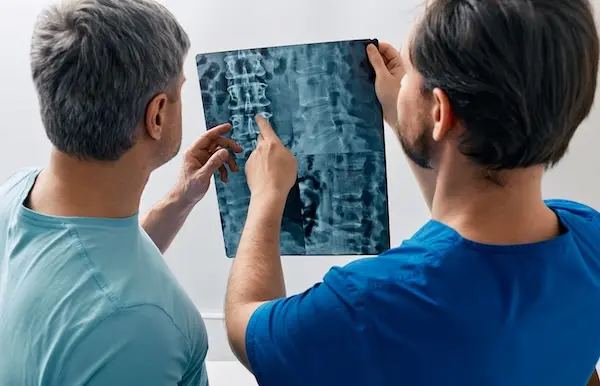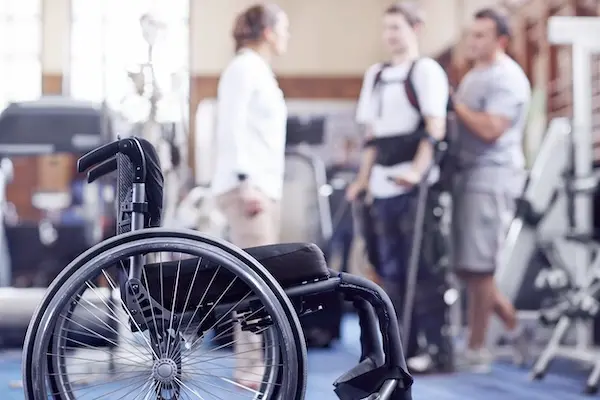The Role of Physical Therapy in Spinal Cord Injury Rehabilitation
Spinal cord injuries can drastically change a person’s life, but with the right support and a tailored treatment plan, recovery is possible. One of the most effective components of spinal cord injury rehabilitation is physical therapy spinal recovery. At the core of this recovery journey are physical therapy and rehabilitation experts, who design individualized programs to aid spinal cord injury patients in regaining function and enhancing their quality of life. This article explores how physical therapy spinal recovery is achieved, offering a comprehensive look into its methods, benefits, and essential role in the rehabilitation process.
Understanding Spinal Cord Injuries
A spinal cord injury (SCI) refers to damage to any part of the spinal cord or nerves at the end of the spinal canal. This type of injury often causes permanent changes in strength, sensation, and other bodily functions below the site of the injury. Traumatic spinal cord injuries are most often caused by motor vehicle accidents, falls, or sports injuries. Understanding these injuries is key to designing effective physical therapy spinal recovery programs.
The Role of Physical Therapy in Spinal Cord Injury Recovery
Physical therapy plays a vital role in spinal cord injury recovery. Its main objective is to help patients restore movement and function. A physical therapy program tailored to the injury level and patient’s needs can address numerous complications including muscle atrophy, nerve compression, and muscle tightness. This makes physical therapy spinal recovery a foundational aspect of patient care.
How Physical Therapy Helps Spinal Injury Recovery
How physical therapy helps spinal injury recovery lie in its ability to combine manual therapy, strengthening exercises, and targeted interventions. These therapies collectively reduce pain, improve muscle strength, and increase a patient’s capacity to return to daily life and normal activities.
Key Benefits of Physical Therapy Spinal Recovery
1. Alleviate Pain and Improve Function: Pain management is a major component of spinal injury recovery. PT interventions positively impacted pain levels in many patients, allowing them to engage more actively in recovery.
2. Restore Muscle Strength: Muscle strength is often diminished following a spinal injury. Physical therapy spinal recovery incorporates strengthening exercises to rebuild this capacity.
3. Prevent Complications: Conditions like pressure sores, muscle atrophy, and poor posture are common post-injury. A well-designed physical therapy program mitigates these issues.
4. Enhance Cardiovascular Fitness: Reintroducing physical activity in a controlled environment boosts cardiovascular fitness, which supports overall health and rehabilitation goals.
5. Improve Emotional Well-being: Physical therapy focuses not only on the body but also on mental health. Emotional support during sessions enhances the individual’s perceived participation and commitment to the process.
Physical Therapy Focuses for Spinal Cord Injury Patients
Physical therapy spinal recovery involves various treatment modalities:
Manual Therapy
Used to mobilize joints and soft tissues, manual therapy helps reduce pain and muscle tightness, improving motion and flexibility.
Targeted Exercises
These exercises are designed to improve mobility, strength, and coordination, with particular focus on the injury level and recovery goals.
Posture Correction
Proper alignment aids in pain management and improves the efficiency of movements during daily tasks and therapy sessions. Posture correction is a vital component of physical therapy spinal recovery, aiding balance and preventing complications.
Mobility Training
Training often includes balance practice, assisted walking, or the use of assistive devices to encourage independence.
Multidisciplinary Approach to Recovery
Spinal cord injury rehabilitation is most effective when supported by a multidisciplinary approach. Physical therapists, occupational therapists, and rehabilitation medicine professionals collaborate to ensure comprehensive care.
The Comprehensive Approach of a Physical Therapy Program
An effective physical therapy program for spinal cord injury patients includes:
- Assessment of injury level
- Personalized care and treatment plan
- Progressive exercise program
- Regular monitoring and adjustments
- Inclusion of occupational therapists when needed
Addressing Common Health Conditions Post-Injury
Post-spinal cord injury, patients often suffer from secondary conditions like nerve compression and herniated discs. Physical therapy spinal recovery directly targets these issues through specialized techniques and exercises.
Encouraging an Active Lifestyle
Engagement in physical activity is essential to recovery. Physical therapists design routines that not only strengthen muscles but also help maintain an active lifestyle, which is crucial for long-term success in physical therapy spinal recovery.
Normal Activities and Daily Tasks
A large part of spinal cord injury recovery involves regaining the ability to perform daily tasks. Through repeated practice and guided support, patients improve their confidence and autonomy in these areas. These activities are gradually reintroduced through structured physical therapy spinal recovery plans.
Personalized Care and Recovery Goals
Every patient’s spinal cord injury recovery journey is unique. A personalized physical therapy plan ensures that therapy aligns with the individual’s recovery goals, medical management requirements, and emotional state.
The Ultimate Aim of Spinal Cord Injury Rehabilitation
The ultimate aim of spinal cord injury rehabilitation is to enable patients to achieve the highest level of independence and quality of life. Whether through improving mobility, reducing pain, or restoring function, the benefits of physical therapy spinal recovery are immense.
Evidence-Based Support: Systematic Review and Meta Analysis
Numerous studies, including systematic reviews and meta analyses, affirm the positive outcomes of physical therapy for spinal cord injuries. For example, a systematic review published in the Journal of Rehabilitation Medicine analyzed multiple randomized controlled trials and found that physical therapy interventions significantly improved motor function, cardiovascular fitness, and quality of life in spinal cord injury patients. Another meta analysis in Spinal Cord journal revealed that early and intensive physical therapy programs led to higher rates of muscle strength recovery and reduced dependency in daily tasks. The evidence consistently shows that physical therapy spinal recovery interventions contribute to measurable improvements in function, alleviate pain, and enhance the overall rehabilitation process for many patients.
Emotional Support and Participation
Incorporating emotional support into therapy helps patients overcome psychological barriers. Many patients find that this holistic approach improves their engagement in the recovery process. Examples of how emotional support can be shown and increased include:
- Creating a safe and positive environment where patients feel comfortable expressing concerns
- Providing regular encouragement and positive feedback to boost motivation and confidence
- Including family members or loved ones in therapy sessions to build a support network
- Using motivational interviewing techniques to help patients set personal recovery goals
- Offering counseling referrals or access to mental health professionals as part of a comprehensive approach
- Celebrating small victories and milestones to reinforce progress
- Encouraging open communication between patients and the care team
- Incorporating patient preferences into the therapy plan to promote autonomy
- Providing peer support opportunities, such as meeting others with similar injuries who have made progress
These strategies empower spinal cord injury patients to remain engaged, supported, and optimistic throughout the rehabilitation process.
Reintegration into Daily Life
One of the critical goals of physical therapy is to help patients reintegrate into their daily life. Whether returning to work, participating in hobbies, or managing household tasks, physical therapy spinal recovery lays the foundation for independence. This process is tailored to each patient’s specific injury level and lifestyle. Strategies and support for reintegration include:
- Vocational rehabilitation and job retraining, helping patients adapt or find new employment opportunities
- Simulated practice of real-world tasks in the therapy setting, such as cooking, bathing, or using transportation
- Energy conservation techniques to make daily activities more manageable
- Home modifications and accessibility planning, including ramps, grab bars, or adapted furniture
- Adaptive sports and leisure activity programs to reintroduce enjoyable routines and foster social engagement
- Time management and organizational skill-building for better daily life structure
- Education on self-care and independence, empowering patients to make informed choices about their routines
These reintegration tools and techniques help patients build confidence, regain autonomy, and achieve a fulfilling quality of life after a spinal injury. Each reintegration strategy is part of a larger physical therapy spinal recovery framework.
Long-Term Health and Rehabilitation Goals
Spinal cord injury patients benefit from setting both short- and long-term goals. Physical therapy guides this progression, ensuring that therapy sessions are aligned with health conditions, pain management needs, and life aspirations. These goals can include:
- Maintaining or increasing mobility and strength through customized exercise programs
- Preventing secondary complications, such as pressure ulcers, urinary tract infections, or joint contractures
- Improving overall physical health including cardiovascular fitness, respiratory function, and muscle endurance
- Sustaining independence in daily tasks such as grooming, bathing, and dressing
- Returning to meaningful roles, including employment, education, or caregiving responsibilities
- Enhancing emotional and psychological well-being with ongoing counseling or peer group participation
- Adapting long-term lifestyle habits that support wellness, such as nutrition, hydration, and regular physical activity
By clearly defining these objectives and tracking progress, physical therapists help patients maintain motivation and focus. This goal-driven approach fosters a sense of purpose and long-term achievement, making physical therapy spinal recovery a dynamic and ongoing process.
Begin Your Recovery Journey with VeriSpine Joint Centers
The road to spinal cord injury recovery is undoubtedly challenging, but physical therapy spinal recovery offers a powerful path forward. With the right guidance and a personalized, evidence-based treatment plan, many patients not only recover but thrive.
At VeriSpine Joint Centers, our dedicated team of physical therapy and rehabilitation experts is committed to helping you regain strength, restore function, and reclaim your independence. From alleviating pain and improving mobility to building emotional resilience and reintegrating into daily life, we offer comprehensive support at every stage of your journey.
Take the next step today. Contact VeriSpine Joint Centers 678-782-7999 to schedule your personalized consultation and start working toward a healthier, more active future. Your recovery is our mission—and your goals are within reach. A beacon of hope. Through a comprehensive, personalized, and evidence-based approach, physical therapists help patients regain strength, function, and confidence. From alleviating pain and preventing complications to fostering emotional support and improving daily function, physical therapy plays an essential role in the rehabilitation process. With continued support from physical therapy and rehabilitation experts, many patients not only heal but thrive, reclaiming a meaningful and active life.







